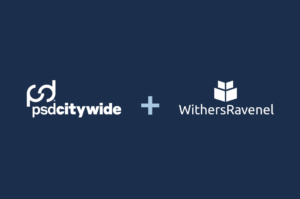Like so many municipalities across Canada, the small Town of Minto, Ontario is faced with the challenge of a looming infrastructure deficit. As documented in the most recent 2016 Canadian Infrastructure Report Card, a reported 35 percent of municipal assets in this country are in fair, poor, or very poor condition – amounting to a $1.1 trillion replacement cost.[i] We know all too well that municipalities are restricted when increasing their property tax and given that the property tax is the main source of revenue for municipalities, it’s easy to conclude that communities are strapped for cash. The question then remains: what is the solution to the municipal infrastructure deficit?
The collaboration between finance, public works and the executive throughout the multi-year RoadMap process encourages strategic dialogue and organizational cohesiveness.
The Canadian Infrastructure Report Card’s answer was clear: a sustainable asset management program is a significant part of the solution, placing greater emphasis on reinvestment during an asset’s lifespan. Unfortunately, as of 2016, only 35 percent of small communities in Canada had an asset management plan (AMP) in place. With increased asset management capacity, a municipality is better equipped to make more strategic decisions about asset lifecycle activities and the prioritization of infrastructure investments. The ultimate goal of asset management is to enable municipalities with better data, capacity and process to do the right thing to the right asset at the right time, thereby reducing costly reactive maintenance activities and protecting communities from making short-sighted investment decisions.
As a first step toward addressing its infrastructure deficit, the Town of Minto began to develop its own sustainable asset management program in 2016, consulting with PSD Citywide to build policies, processes and strategies as part of an Asset Management RoadMap. PSD Citywide had the opportunity to sit down with Minto’s Gordon Duff, Deputy Chief Administrative Officer and Mike McIssac, Roads Foreman to discuss how asset management has evolved in the Town of Minto. While Minto has not yet fully completed the RoadMap, it has embraced asset management with open arms and the positive outcomes of the RoadMap process are already being recognized.
I. A Sustainable Asset Management Program Roadmap
With the introduction of grant funding and legislative requirements for asset management planning across Canada, municipalities have turned their attention to completing an asset management plan (AMP) to meet mandated deadlines. Although the AMP is certainly an instrumental tool in a broader municipal asset management program, when completed without the support of accurate asset data or asset management policies and procedures, communities run the risk of producing a document that has ill-informed recommendations and limited corporate buy-in. With the Asset Management RoadMap, PSD’s asset management consultants work alongside municipal staff and department heads to establish and improve their asset management practice. The collaboration between finance, public works and the executive throughout the multi-year RoadMap process encourages strategic dialogue and organizational cohesiveness.
The RoadMap, with eight distinct steps along a path to asset management maturity, culminates in a comprehensive AMP that is informed by more accurate, up-to-date asset data, supported by policy, process and tools that achieve greater sustainability and buy-in for the municipality’s asset management program.
II. The Current State of Maturity
The State of Maturity assessment is the first step of the Roadmap, providing town staff with an overview and analysis of the current state of their asset management program, determining what data has been collected and the quality of that data. Accurate and reliable asset data is the backbone of asset management, and incomplete and unreliable data can greatly impair the asset management process. In other words, if a municipality does not have a solid foundation of reliable asset data it doesn’t matter what processes or strategies it implements, as it is not reflective of the current state of infrastructure. Therefore, one of the key steps to improving asset management is enhancing the processes and protocols that guide data collection.
As was the case for most municipalities in Canada, asset management first became a priority in Minto in 2008 with the introduction of PSAB 3150. Gordon Duff states that at the time, the administration was able to make a comprehensive list of all tangible capital assets owned by the Town – a daunting task for a small municipality with no dedicated asset management personnel. Minto is a small mixed urban-rural municipality with a population of roughly 9,500. In 1999, the Township of Minto, Town of Harriston, Village of Clifford and Town of Palmerston amalgamated to become what is now known as the Town of Minto. The newly formed municipality inherited an overwhelming amount of assets – more than what the population needs. According to Gordon, the Town has three water systems, three sanitary systems, and three fire stations.
When Minto staff participated in the State of Maturity Assessment Workshop, it became evident that there was a significant gap in their asset inventory. Gordon noted that the biggest challenge facing the Town is collecting asset data without the luxury of dedicated asset management staff. One of the core recommendations PSD Citywide provided was to better improve data collection practices. Imperative to quality data collection is encouraging all department heads to confirm their asset inventory is accurate. Indeed, the communication between departments and administration in the Town of Minto is one of the Town’s greatest strengths and one of the keys to continue improving asset management outcomes moving forward.
An estimated 75 percent of the Town of Minto’s infrastructure is managed by its public works department. Heading that department is Mike McIssac who has been instrumental in enhancing the quality and reliability of the Town’s asset data. In 2016, the Town of Minto completed a Roads Need Study that provided more up-to-date and quality condition data on its road network. Several national studies, including the new report by PSD Citywide, Canadian Water Network and the Canadian Water and Wastewater Association included in this issue, confirm the value that accurate assessed condition data brings to an asset management program.
With a better understanding of the current state of maturity in asset management in Minto, the municipality was able to adopt a brand new Strategic Asset Management Policy that will help shape the governance and outcomes of their program for years to come. Gordon noted that their Council has been very supportive of the Town’s asset management activities.
III. Risk and Lifestyle Models
Implementing a network-wide risk management framework allows communities to rank and rate the level of risk associated with its infrastructure. This helps communities prioritize capital projects and decide which assets a municipality works on first, highlighting how the “worst-first” approach is never the best course of action when deciding which assets need to be replaced or rehabilitated. Instead, when determining priority capital projects, the consequence of failure (and not just the probability of failure) ought to be considered. To provide an example, determining asset risk could involve the analysis of factors such as the road environment (urban, semi-urban, rural); surface material (gravel vs. asphalt); the diameter of a water pipe; and land use factors, to name a few.
It is also important to develop lifecycle activity strategies that determine the optimal time to rehabilitate or replace assets in order to achieve the lowest total cost of ownership. In other words, it’s about determining how to maximize the life of an asset at the lowest cost to the municipality. PSD Citywide worked alongside Minto’s public works staff to develop customized risk profiles and lifecycle activity strategies, built into the Town’s asset management database, to help project future lifecycle requirements and capital investment needs. These strategies will be a key component for internal staff in determining an annual lifecycle activity schedule and will also play a vital role in the development of the Town’s AMP.
Fifteen years after the road’s initial replacement, a mill and resurface – considered a “capital rehabilitation” – is scheduled to extend the life of the road surface, with a second round of rehabilitation scheduled for another 15 years later. In performing these activities and investing in the road surface earlier in its lifecycle, the asset’s total lifecycle cost is greatly minimized. The two targeted rehabilitations provide 60 years of useful life for the asset, whereas completing a full replacement of the asset without rehabilitations would only provide 30 years of useful life. Once the lifecycle model is applied to the whole road network, the total cost avoidance on roads capital projects can be calculated.
In Minto, the lifecycle model reduced their estimated annual capital requirement for roads capital costs by a significant percent. The actual cost avoidance achieved will depend on the municipality’s ability to implement the full lifecycle model and engage in all scheduled lifecycle events. Regardless, with a lifecycle model in place, Minto is able to plan optimal preventative maintenance and rehabilitation activities to reduce costs and limit reactive maintenance activities. A lifecycle approach to asset management also contributes to a greater average condition of an asset over its full lifecycle, translating into greater levels of service experienced by residents.
When asked how the public works team is responding to the new lifecycle approach to maintenance, Mike explained that there has definitely been a shift in attitude. While it might have once seemed silly to rehabilitate a busy road that had just been milled and resurfaced only two years ago, before resurfacing a country road mired with potholes, the decision now seems entirely logical once backed with data and process. “Being a small municipality, our workers are beginning to understand the value of preventative maintenance. There are certain roads that may seem more obvious to fix first, but then they realize that there may be other roads to fix that better suit our funds available. That is, understanding the difference between a major capital repair versus reconstruction and maintenance.”
IV. Moving Forward with a Sustainable Asset Management Program
Moving forward, Gordon and Mike report that their sanitary sewer system and road network are two of the key asset categories that the Town will be focusing on from an asset management perspective. Further, when asked about the future of asset management in the Town of Minto, Gordon notes that a person solely dedicated to asset management will soon be needed to maintain all their asset data. He also notes that it will be important that the Town’s asset management activities meet the requirements of O. Reg. 588/17 – Ontario’s newly implemented asset management regulation for municipalities. Gordon also stresses the importance of building a sustainable asset management program: “The main message I try to hammer home is you’re never complete when it comes to asset management. It is an ongoing function and it requires a significant investment of staff and capital to keep the progress going.”
Mike notes that data collection needs to remain a core priority for the Town. He states, “the major benefit of having a sustainable asset management program is bringing the whole picture to the forefront … having the capability to understand and keep tabs on our assets is really beneficial. A lot of the rate payers and the general public do not realize the magnitude of the dollar values that are needed to be able to maintain the municipality. An asset management program brings a lot of issues to light and helps stretch our tax dollars to their fullest potential.”
One of the final components of this phase of Minto’s asset management journey will require staff to begin viewing asset management through a more service-focused lens. Recent developments in municipal asset management have placed a greater emphasis on understanding how assets produce service outcomes. As part of PSD’s RoadMap, the Town began this process through the development of their first Levels of Service Framework – the goal of which is to track and evaluate their ability to provide accessible, reliable, safe, affordable and sustainable services to the community. Through the tracking of key performance indicators, Town staff hope to be better equipped to identify the role that assets play in service delivery and identify opportunities to improve their service offerings now and into the future. Once current service levels are determined for each asset class, the Town can begin the process of citizen engagement to work towards establishing desired levels of service. At the end of the RoadMap, Minto will have a comprehensive and data-rich sustainable asset management program that includes an Infrastructure Report Card for all asset categories, an asset management strategy, and a financial strategy to meet the infrastructure challenge over the medium and long term.
The Town of Minto has made great strides in their asset management process. What was learned from their experience can be found in the words of both Gordon and Mike: asset management is an ongoing function, and its real value lies in the cost savings that it provides to the municipality and the transparency and accountability that it provides to citizens.
SLOANE SWEAZEY, MA completed her master’s degree in Political Science, specializing in Public Policy and Administration, as well as a Bachelor’s Degree in Political Science and International Development, both from the University of Guelph. Sloane’s research interests surround municipal governance and public policy, where she has researched community-engagement initiatives and child care policy at length.
[i] http://canadianinfrastructure.ca/downloads/Canadian_Infrastructure_Repor….



